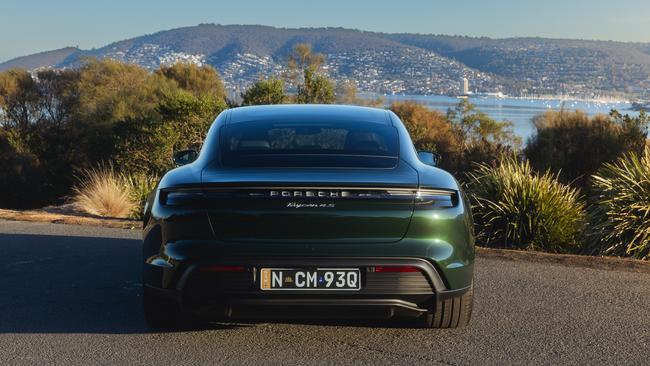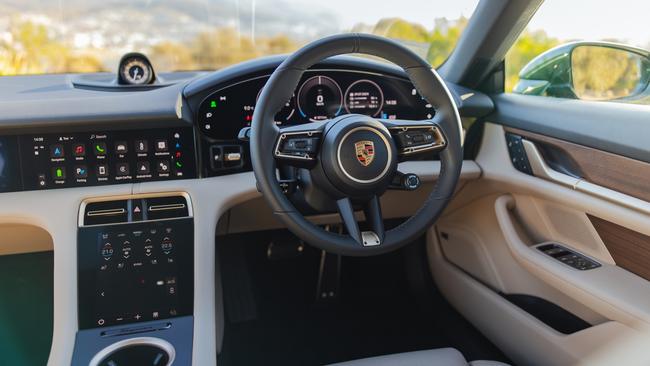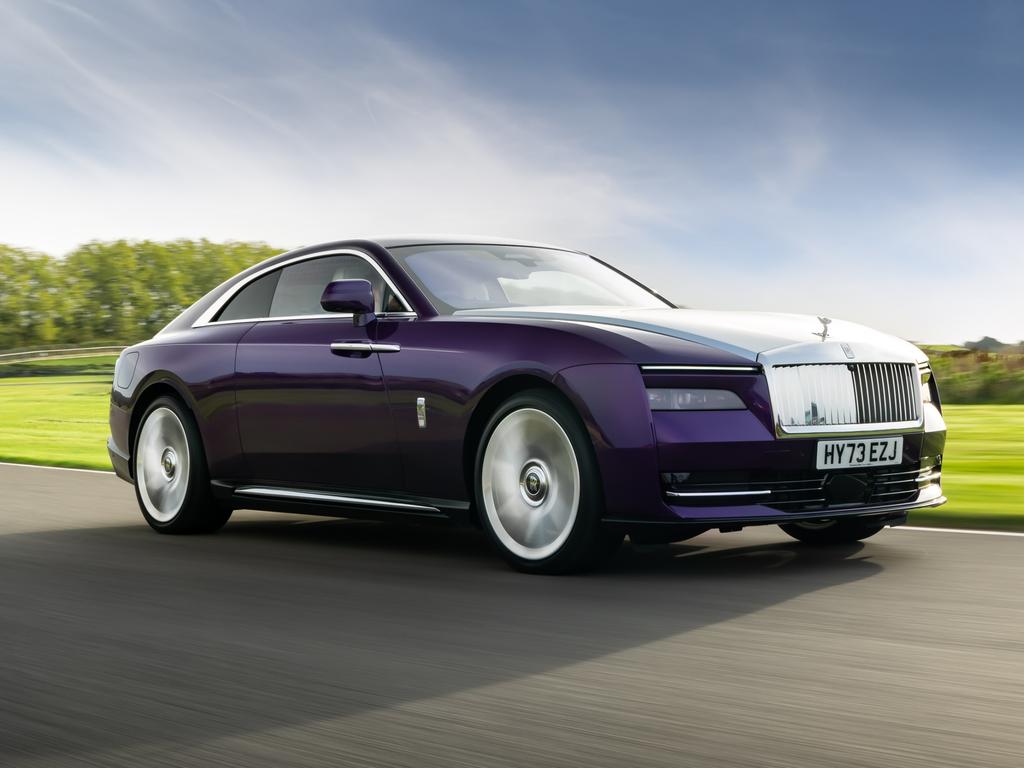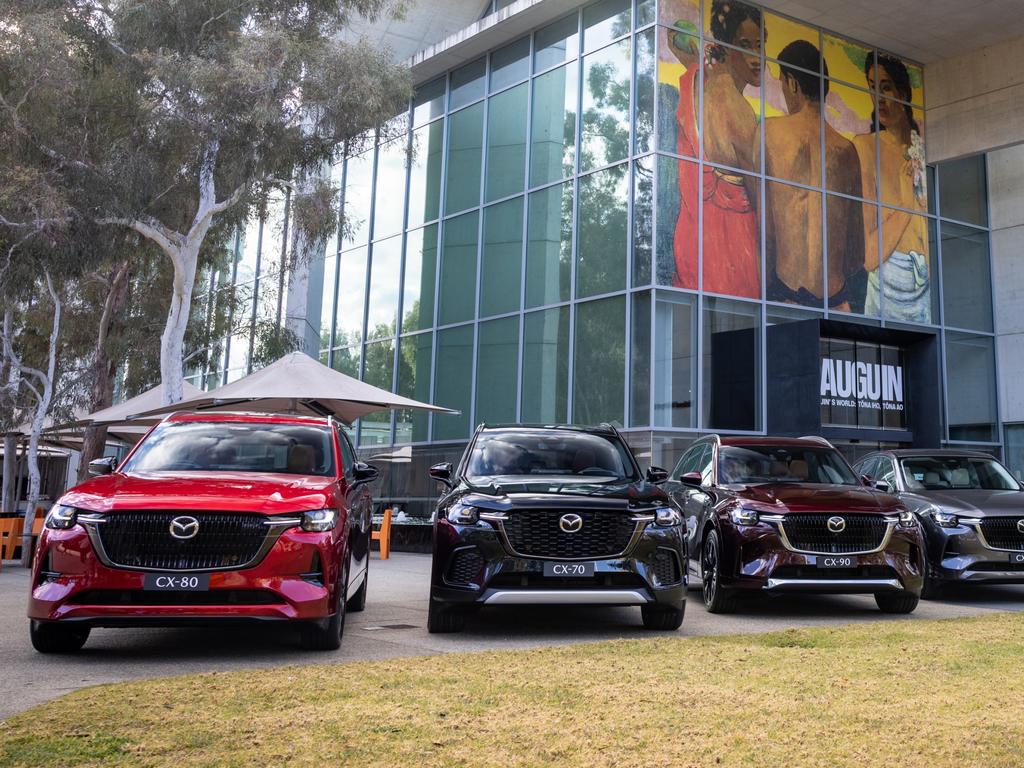Prepare for lift-off in Porsche’s electric grand tourer
The new Porsche Taycan needs a ‘Push to Pass’ button in the same way that I need an AI analogy generator, Ian Thorpe needs swimming lessons and sharks need more teeth.

The new Porsche Taycan comes with a “Push to Pass” button, which adds up to an extra 70kW of power for 10 seconds of monumentally mad acceleration. It needs this button in the same way that I need an AI analogy generator, Ian Thorpe needs swimming lessons and sharks need more teeth (or, for F1 nerds, the way Max Verstappen needs more Utter Bastard).
If you don’t press this button, a Taycan will still accelerate past mortal vehicles – those that still insist on using old-school combustion engines and must progress through many gears to go faster – in the same way that a race horse would accelerate past a pommel horse.
When the first Porsche Taycan was launched almost five years ago, I declared that the vivid violence of the Turbo S model’s straight-line acceleration made me sick. The only way to describe the new version is that it made me fully sick. I am 300 per cent sure that no one who bought the old Taycan demanded that Porsche should make an even faster one (rumour has it that some buyers took their car back to Porsche dealerships and demanded recompense for their dry-cleaning bills), and yet the company went and did it anyway, simply because its engineers are stone-cold, speed-obsessed lunatics.

I blame myself for saying that the old base model rear-drive Taycan, which had to make do with just one motor rather than two, was comparatively pedestrian with its 240kW and a zero to 100km/h dash of 5.4 seconds. To be fair, I was comparing it to the wild, range-topping Taycan Turbo S, which had 560kW and could turn your insides into mash on its way to 100km/h in 2.8 seconds – a speed so fast that it felt like you were seeing the future, and that future involved surgery on your neck.
Porsche looked around and noticed that lesser car companies were also making very fast EVs – at least in part because making an electric car go quickly is a lot simpler than the kind of engineering cleverness required in the past – and decided that maintaining its performance advantage would require a complete disregard for the human body and its pathetically wimpish limits.
As a result, after some clever tweaking of the Porsche’s battery to make it even more dense in power yet somehow lighter, the base Taycan now has 300kW and is more than half a second faster to 100km/h, at a very useful 4.8 seconds.
The Turbo S, however, is now simply silly, with a whopping 700kW on tap and a kidney-crushing 100km/h hurtle of 2.4 seconds.
I did no fewer than six acceleration tests of various Taycan models on the main straight of a race track and, while I didn’t enjoy eating my lunch for a second time in reverse, I admit I was impressed. What was much more noticeable when I watched from the sidelines as my colleagues did the same thing was just how much theatre and noise is missing when an electric Porsche breaks the sound barrier, compared to how its petrol cars have always sounded when pushed to the limit.

To their credit, the engineering gurus at Porsche have listened to what customers were asking for – more range between charges – and improved that as well. A Turbo S ($373,600) now offers 630km, up 34 per cent, while the base Taycan ($174,500) has improved its range from 503km to a properly practical 678km. (All Taycans can also charge much faster now, adding up to 315km in just 10 minutes on a fast charger, up from 225km).
The new Taycan also benefits from some subtle cosmetic surgery, which makes it look even more like a four-door version of the gorgeous Porsche 911. It’s a sumptuous grand tourer, with a properly supple ride from its active suspension and suitably plush seats.
But is it a proper Porsche? We were allowed to push the new model on some of Tasmania’s spectacularly lovely roads, and then even harder with some laps around a race track, and my definitive answer is: “Kind of.” I honestly think Porsche engineers are so cunningly capable they could cure obesity if they felt like it, or colonise Mars, and they have come up with a car that steers like a Porsche, accelerates like a rocket and handles like a premium German vehicle should. But driving one around a race track, or on a public road in a spirited fashion, is like shaving your face with a lawnmower, or playing cricket with a ten-pin bowling ball. The new Taycan is 15kg lighter than the old one, but still tips the scales at more than 2.2 tonnes and when you’re belting it around at warp-factor-silly speeds, that weighs almost as heavily on your mind as its price tag.
There are smaller, sharper electric vehicles coming from Porsche, however, including the replacements for the current Boxster and Cayman, and the potent performance of the Taycan certainly gives one hope that those cars will be very impressive indeed.
Porsche Taycan
ENGINE: Permanent magnet synchronous motor, 300kW/410Nm 89kWh battery
TRANSMISSION: Two-speed automatic, rear-wheel drive
EFFICIENCY: 15kWh per 100km; range 678km
PRICE: $174,500
RATING: 4/5







To join the conversation, please log in. Don't have an account? Register
Join the conversation, you are commenting as Logout